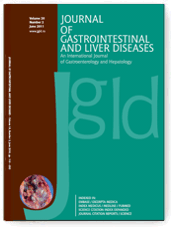Abstract for the Italian study:
Catassi C; Ratsch IM; Fabiani E; Rossini M; Bordicchia F; Candela F; Coppa GV; Giorgi PL
Coeliac Disease in the Year 2000: Exploring the Iceberg [see comments]
Department of Pediatrics, University of Ancona, Italy.
Source: Lancet 1994 Jan 22; Vol. 343(8891):200-3
Comment in: Lancet 1994 Jan 22; Vol. 343(8891):188
Comment in: Lancet 1994 Mar 12; Vol. 343(8898):675
Comment in: Lancet 1994 Apr 16; Vol. 343(8903):984
Celiac.com Sponsor (A12):
Unique Identifier: 94118649 It is now generally believed that sub-clinical Coeliac disease is common in the general population. We have undertaken screening for this disorder in a school district in central Italy. Screening was divided into three levels: first, IgG and IgA antigliadin antibody (AGA) assay on capillary blood obtained by finger prick; second, AGA plus IgA anti-endomysium antibody (AEA) test and measurement of serum immunoglobulins in venous blood; and third, intestinal biopsy. 3351 students (66% of the eligible population) aged 11-15 years attended first-level screening. 71 (2%) were recalled because of AGA positivity; 18 of these satisfied second-level criteria and underwent intestinal biopsy.
Coeliac disease was diagnosed in 11 subjects, most of whom had no serious symptoms. Selective IgA deficiency was found in 4 subjects, 1 of whom also had coeliac disease. The prevalence of sub-clinical coeliac disease in the study group was 3.28 per 1000*. Coeliac disease screening is feasible and involves only slight discomfort to the general population. Such screening can detect large numbers of cases of Coeliac disease, which can be treated with a gluten-free diet. Many sub-clinical cases of Coeliac disease would not be detected by screening only a selected group of at-risk patients.
The following chart summarizes the study:
| No. of Students in Study | No. Positive for IgG and IgA Antigliadin Antibodies | No. Positive for AGA plus IgA Anti-Endomysium Antibodies | No. w/ Positive Intestinal Biopsy |
| 3,351 ( = 100%) | 71 ( = 2.1%) | 18 ( = 0.537%) | 11 ( =.328%) |
*Please note that the finding in this study of 3.28 per 1000 includes only those who satisfied all criteria of diagnosis, including a biopsy. Many of the original 71 kids (2%) who tested positive for IgG and IgA antigliadin antibodies may later develop typical or atypical symptoms, and have positive intestinal biopsies.









Recommended Comments
There are no comments to display.